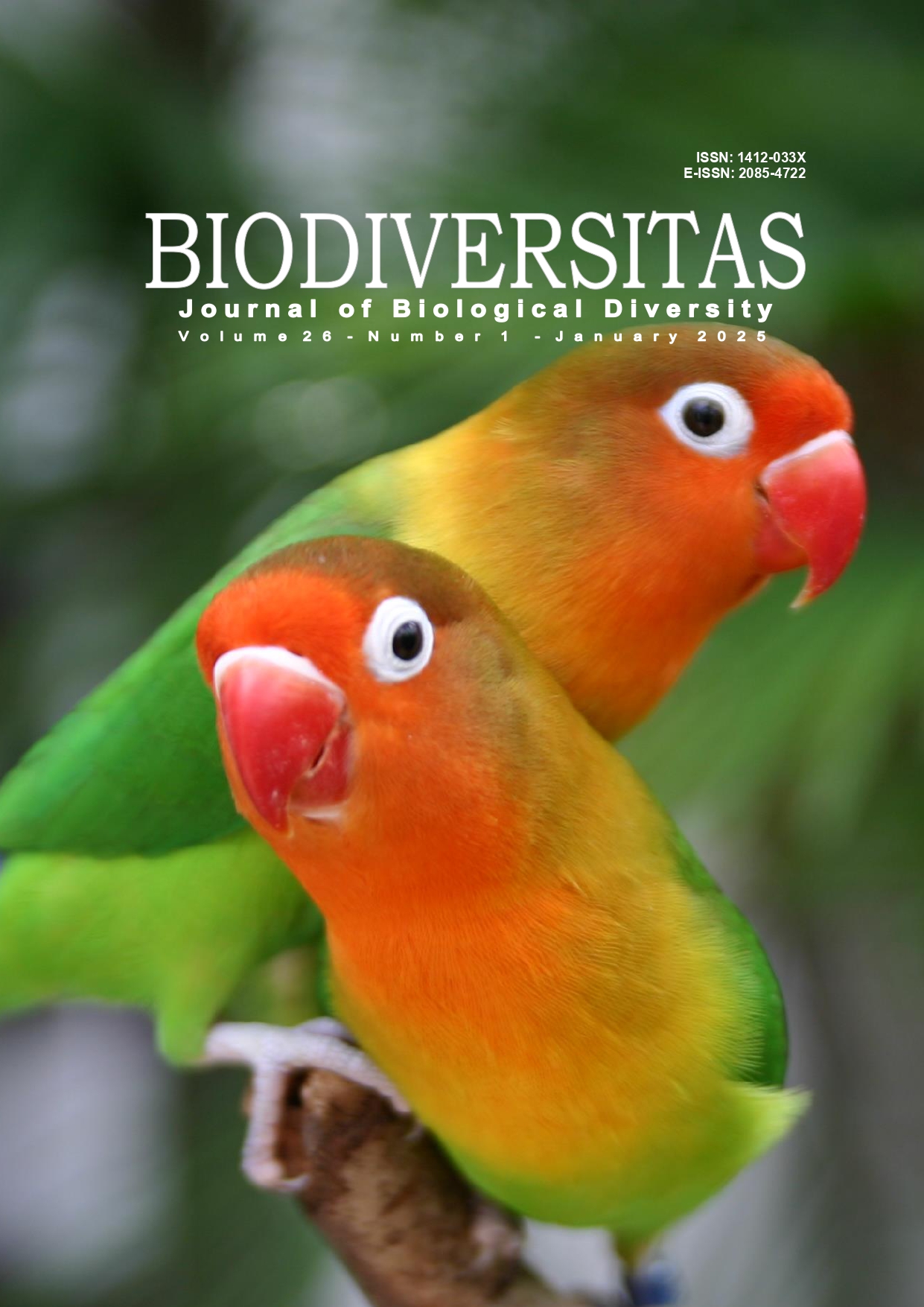Effect of probiotic yeast Pichia kudriavzevii 2P10 and mannan-oligosaccharide on the intestine health of rat infected with Salmonella Typhimurium
##plugins.themes.bootstrap3.article.main##
Abstract
Abstract. Wulan R, Astuti RI, Rukayadi Y, Estuningsih S, Meryandini A. 2025. Effect of probiotic yeast Pichia kudriavzevii 2P10 and mannan-oligosaccharide on the intestine health of rat infected with Salmonella Typhimurium. Biodiversitas 26: 335-344. Recent evidence suggests that probiotic yeast is efficacious against bacterial infections. This study evaluated the effects of dietary supplementation with the live yeast probiotic Pichia kudriavzevii 2P10, Mannan-Oligosaccharide (MOS), and their combination on the growth performance and intestinal health of male Sprague-Dawley (SD) rats infected with Salmonella Typhimurium ATCC 14028 (ST). Two groups were studied: one without ST infection, including P. kudriavzevii 2P10 (PRO), MOS, and their combination (PMOS), and one with ST infection, including CONTROL.ST, PRO.ST, MOS.ST, and PMOS.ST. A diet of 108 CFU/mL PRO and 5% MOS was administered orally for 15 days, followed by a challenge with 108 CFU/mL ST in the ST group. After three days of challenge, the parameters were observed. The findings of this research are that ST infection in rats can cause colonization of ST in the ileum, causing a decrease in white blood cells, necrosis of epithelial cells, and an increased villous-to-crypt ratio (VCR) as a response to inflammation. The administration of PRO, MOS, and their combinations prevents inflammation, as proven by the absence of necrosis and epithelial desquamation. PRO, MOS, and their combinations stimulate intestinal health by increasing villus height, width, and VCR. MOS was found to be the best for increasing lactic acid bacteria. During ST infection, P. kudriavzevii 2P10 can coagulate with ST in the ileum, with this yeast-bacteria binding mechanism allowing free Salmonella Typhimurium cells to bind more to P. kudriavzevii 2P10 cells than to intestinal epithelial cells so that bacterial infection can be prevented. In conclusion, P. kudriavzevii 2P10 administration was the best for stimulating growth performance and intestinal health and preventing severe ST infection in male SD rats, offering promising avenues for further research and potential practical applications in human and animal nutrition and health.
##plugins.themes.bootstrap3.article.details##
Most read articles by the same author(s)
- DOVA KELVIN MESRIAN, RIKA INDRI ASTUTI, MUHAMMAD EKA PRASTYA, ARIS TRI WAHYUDI, Pyocyanin derived from the marine sponge-associated bacterium, Pseudomonas aeruginosa P1.S9, has the potential as antibacterial , Biodiversitas Journal of Biological Diversity: Vol. 25 No. 11 (2024)

